The Most Underrated Park in Every State
This article originally appeared on Outside
Social media has done strange things to public-lands use. On one hand, it's gotten loads of newcomers into the great outdoors. On the other, all those posts increase visitation to just a few easy-access photo ops in a handful of parks. Last year, the National Park Service (NPS) announced that among the 424 units it manages, 26 percent of the system's nearly 300 million visitors went to the eight most visited parks.
On seeing these numbers, I did a double-take--and then a deep dive, examining many of America's less-traveled natural wonders. After all, there are 640 million acres of federally managed lands and 18.7 million acres of land managed as state parks. Surely plenty of other places are worth a trip.
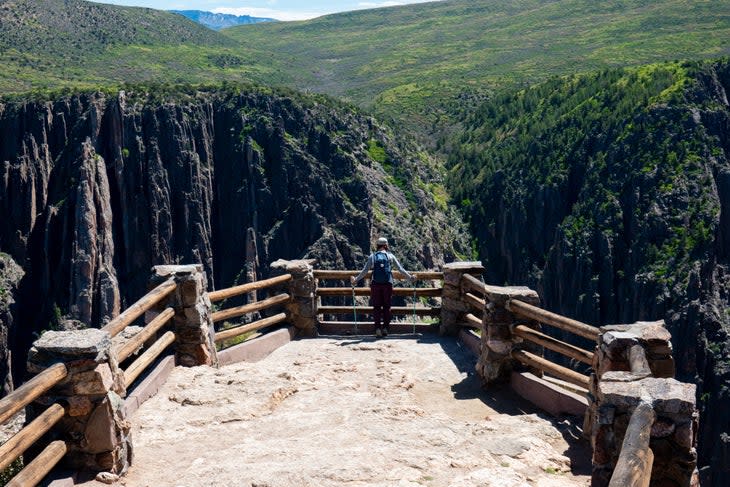
I've been to every national park in the U.S. and learned a lot along the way about how to get off the beaten path. I also researched park, campground, and trail-review websites; perused countless traveler photos; and asked other outdoor writers and various trail users across the country about their favorite hidden gems.
I wasn't choosy about designations, like state park, preserve, or national monument. My mission was to get to the bottom of which little-visited spaces had the most spectacular scenery and diverse outdoor activities.

The result? A list of the country's most underrated parks in every state, with something for everyone, from the adrenaline-fueled adventure athlete to the armchair, or hammock-swinging, appreciative lakeside reader. Here it is.
Alabama
Stephens Gap Callahan Cave Preserve
The dramatically lit 143-foot cave leading into Stephens Gap would look more at home in a sci-fi movie than a U.S. park, and that's why it made our list. This cavern, set in a woodland about 30 minutes outside of Huntsville, is a local favorite for photographers and cavers, but what is less known is that day hikers can access its huge walk-in entrance via a forested 1.5-mile (round trip) trail. A permit for the cave, which has daily visitor limits, is required, and should be arranged two to three weeks ahead. Pack a helmet, also required, and wear sturdy trail shoes or hiking boots with excellent tread. Descending the deep entrance pit takes technical skills and rappelling equipment; do not attempt to enter that way without experience and specialty equipment. Use caution even on the walk-in passage, which passes the pit.
Alaska
Arctic National Wildlife Refuge
With an expanse of over 19 million acres (roughly the size of South Carolina), the Arctic National Wildlife Refuge, or ANWR, is the largest federally protected conservation area in North America. Though it may lack the striking, glaciated summits of Denali National Park and the easy road access of Kenai Fjords, ANWR is home to enormous caribou herds, all three species of U.S. bears (brown, black, and polar), muskoxen, wolves, and more than 200 species of migratory birds. Getting to this remote park in the majestic Brooks Range is a journey, but a few trekking companies like Alaska Alpine Adventures offer itineraries to take the edge off your planning.
Arizona
Chiricahua National Monument
Chiricahua is often hailed as a "wonderland of rocks," a unique landscape of rhyolitic formations caused by volcanic eruptions and erosion over millennia. Travelers can sightsee on a paved, eight-mile scenic drive or lace up their trail runners and hit the park's 17 miles of hiking paths (Lower Rhyolite Canyon is filled with pinnacles). With two bills currently moving through Congress aiming to redesignate Chiricahua as a national park, perhaps the visitation tide will turn, but for now, the place is a diamond in the rough.
Arkansas
Buffalo National River

In 1972, Buffalo River became the country's first national river, flowing freely for 135 miles through the woodsy Ozark Mountains. As Buffalo is one of the few remaining undammed rivers in the lower 48, watersports are front and center here-visitors can kayak jaw-dropping class III in the spring-but the NPS-managed park is also home to miles of hiking and backpacking trails, rock-climbing routes, bike trails, and ethereal night skies.
California
Pinnacles National Park
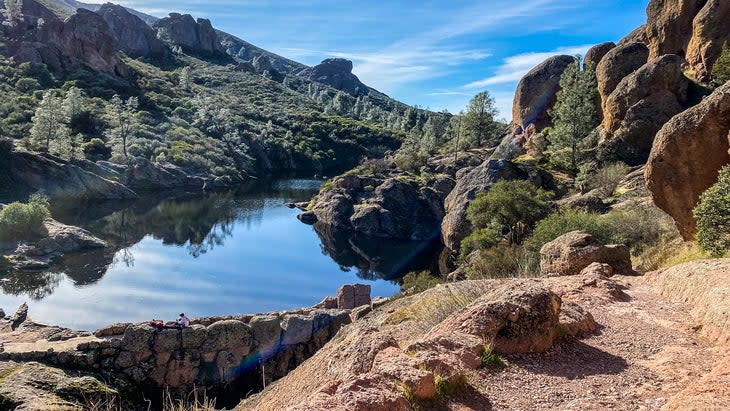
Established by President Obama in 2013, Pinnacles is the newest of California's nine national parks, still often overlooked in favor of Instagram favorites like Yosemite and Joshua Tree. This central Cali stunner offers a long list of epic outdoor adventures all its own, from rock climbing up fins of volcanic breccia, to hiking through moss-lined caves and marveling at endangered California condors in their natural habitat.
Colorado
Black Canyon of the Gunnison National Park

Skip the timed entry permits and crowds of Rocky Mountain National Park for the dark, foliated metamorphic rock of the Black Canyon of the Gunnison, a vertiginous ravine carved by the churning Gunnison River some 2,700 feet below the rim. Road trippers will delight in the park's many accessible overlooks-you can see how Painted Wall got its name-while advanced hikers may want to scramble down an inner canyon route (permit required), and climbers with advanced traditional skills climb its steep and committing routes. The place had only 300K visitors last year, so you're sure to enjoy some of the solitude you seek.

Connecticut
Stewart B. McKinney National Wildlife Refuge
With much of the East Coast developed by enterprising industrialists before the conservation movement was born, it can be difficult to find land where wildlife is free to roam. At Stewart B. McKinney National Wildlife Refuge, visitors can meander through some of the oldest maritime forest and largest undeveloped coastal wetlands in Connecticut, a mere 30 minutes from New Haven. Ranger-led programs introduce the curious to the area's shorebirds, terrapins, and wildflowers, but intrepid explorers might prefer to take a hike in the Salt Meadow Unit or paddle along the Menunketesuck River in search of egrets and ibises.
Delaware
Brandywine Creek State Park
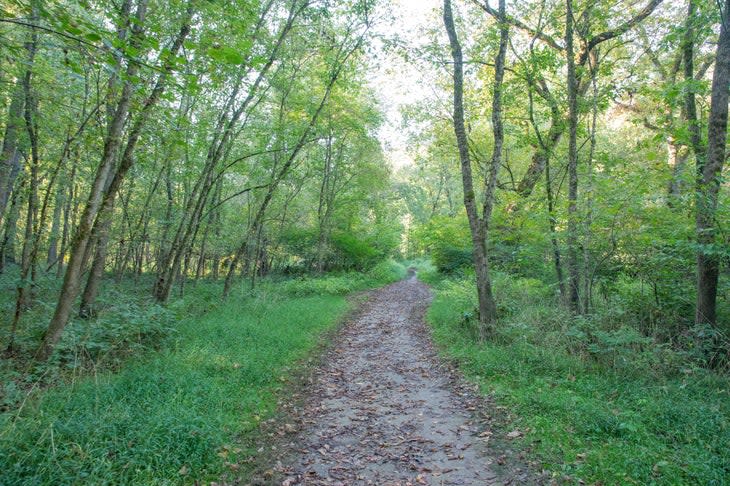
Chock-full of family-friendly activities (disc golf, anyone?) in the densely populated Mid-Atlantic is the 933-acre Brandywine Creek State Park. Situated six miles from central Wilmington (and 20 miles from Philadelphia), it offers a reprieve from urban-summer humidity. Hiking, canoeing, tubing, and kayaking are all popular pastimes, and the park's sprawling meadows, lined with red oak and tulip poplar, are the perfect place for a spring picnic.
Florida
Kissimmee Prairie Preserve State Park
Yes, Wind Cave National Park in South Dakota has preserved thousands of acres of unspoiled American prairie, but did you know there's a sizable grassland preserve in Florida? At Kissimmee Prairie Preserve, 90 minutes from the metropolis of Orlando in central Florida, outdoor recreationists can bask in the state's largest remaining tract of dry prairie, home to American kestrels, red-shouldered hawks, and white-tailed kites. More than 100 miles of multi-use trails for hikers, bikers, and equestrians crisscross the park's 54 thousand acres, and there's even an astronomy campground specifically designated for Milky Way viewers to gaze up, free of bright lights and campfires.
Georgia
Providence Canyon State Park

Even with the cute oxymoronic title of Georgia's "little Grand Canyon," Providence Canyon is often passed over in favor of larger state parks like Cloudland Canyon. Though Providence's 150-foot-deep gullies were caused by poor farming practices in the 1800s, today's visitors who hike the area's 2.5-mile loop trail will be treated to some of the most stunning vistas in the state-conifer forests crumbling into pink, orange, and red-hued rock-without the crowds of big-name parks. You can hike, bike and run here. Looking to pop open your ultralight tent? The park also offers a 7-mile backcountry trail with six reservable sites.
Hawaii
Ahupua'a 'O Kahana State Park
On the eastern edge of Oahu, far from the bustle of touristy Waikiki, lies Ahupua'a 'O Kahana State Park, a longtime locals' favorite with loads of sandy space to stretch out on. Framed by the verdant Ko’olau Mountains, this ahupua`a, or ancient Hawaiian land division, is one of the few in the state that's publicly owned. As such, it's designed as a "living park," where visitors can enjoy both the sunshine-spattered beach and the surrounding valley, which is home to a heiau (religious temple), ko'a (fishing shrines), and several agricultural terraces. The 1.2-mile Ko'a and Kilo Trail is an excellent way to explore the area's aforementioned cultural sights.
Idaho
Hells Canyon National Recreation Area
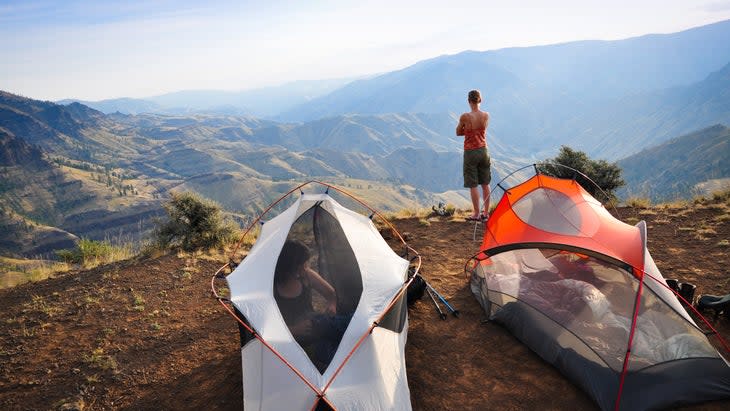
Most of Idaho's mountain seekers make a beeline for the Sawtooths, but the 652,488-acre expanse of Hells Canyon, on the state's western border with Oregon, deserves a detour. This is the deepest river gorge in North America, the canyon rim's high point a staggering 8,000 feet above the Snake River's roaring rapids. There are hundreds of miles of hiking trails to tramp across here, and you can run and bike, but the best way to get up close and personal with Hells Canyon is on the water. No boat? No problem. Snake River Adventures offers full- and half-day tours.
Illinois
Matthiessen State Park
Located a mere 2.5 miles south of the often-crowded Starved Rock State Park sits a haven for waterfall chasers of all ages, Matthiessen State Park. A scenic variation from Illinois' mostly flat farmlands, set about an hour and a half from Chicago, this nature haven is centered around a mossy limestone canyon, punctuated by towering cascades and a handful of black oaks. The most picturesque of the bunch is 65-foot Lake Falls, which is framed by an immense, arcing bridge over the Matthiessen Lake Dam.
Indiana
Shades State Park
If you're looking to hike or canoe in woodsy Indiana, go no further. At 3,082 acres, Shades State Park is one of the Hoosier State's smaller preserves, but we believe in quality over quantity when choosing our outdoor hangs. Far less crowded than nearby Turkey Run State Park, Shades is home to old-growth trees, ladder-accessible ravines, rippling waterfalls, hiking, backcountry camping, and primo views of sandstone-lined Sugar Creek. Pro tip: go in fall when the sugar maples and tulip poplars put on a fiery show.
Iowa
Palisades-Kepler State Park
Comprised of 840 acres of wilderness along the shady banks of the Cedar River, Palisades-Kepler State Park is a Midwest explorer's dream. The park boats year-round hiking on five miles of trails through old-growth hardwood forest, wildflower meadows, and river and bluff views; and opportunities to cast a line for bass, walleye, and catfish. it is a treasure trove of echinoderm fossils, and it contains ancient conical Native American burial mounds. For those hoping to stay the night, an on-site campground and four cabins are reservable online.
Kansas
Kanopolis Lake State Park

Kanopolis Lake has the honor of being the first state park in Kansas, and though its grayish-orange sandstone bluffs may seem out of place in the state's otherwise flat grasslands, they're a staple of the Smoky Hills region, Ellsworth County. The park itself centers around a 3,500-acre reservoir and is split into two scenic areas: Horsethief and Langley Point. Hikers should head for the hills and spend a day on the 7-mile Horsethief Canyon to Red Rock Canyon Loop, looking for white-tailed deer, while boaters and beachgoers will want to post up along the water at Langley Point.
Kentucky
Big South Fork National River and Recreation Area
Though many of Kentucky's adventure-loving crowds will seek out favorites like Mammoth Cave and Carter Caves, Big South Fork River and its myriad of tributaries deserve their time in the limelight. Encompassing 125,310 acres of the sweeping Cumberland Plateau, a wooded landscape full of steep gorges, natural bridges, sedimentary canyons, and rocky riverbanks, this national river and recreation area is paradise for adventurers. Here, it's possible to run class IV rapids, then hike to a pair of stunning sandstone arches in the same day, or mountain bike along West Bandy Creek and maybe climb a sport or trad route at sunset. Hunker down at Charit Creek Lodge or in one of the park's five campgrounds.
Louisiana
Chicot State Park

Chicot State Park is the largest in Louisiana, spanning 6,400 acres of diverse ecosystems that stretch from the swampy Atchafalaya Basin to the mellow hills of center state. As the Bayou State's nickname implies, the park is a haven for paddlers and anglers who want to bask among the quiet waters and spooky cypress knees of Lake Chicot (the state-record largemouth bass was once caught here), but it's also home to 20 miles of hiking and mountain-biking trails, which encircle the lake.
Maine
Camden Hills State Park
Camden Hills is located a 90-minute drive south of Acadia National Park, so no wonder it is overlooked in favor of its famous neighbor, but this coastal escape offers much of the same spectacular year-round scenery. In summer, enjoy a morning hike up the steep 1-mile trail to Mount Battie for panoramic views of the rocky Maine coastline, nearby Penobscot Bay, and, on a clear day, Acadia's Cadillac Mountain, then board a harbor cruise to check out the park's undulating ridgeline from the Atlantic. Hike, bike and run on nine miles of trails of varying difficulty. When autumn hits, motor up the Mount Battie Auto Road for some of the best leaf peeping in the country, and in winter, break a sweat on miles of designated cross-country ski trails.
Maryland
Blackwater National Wildlife Refuge
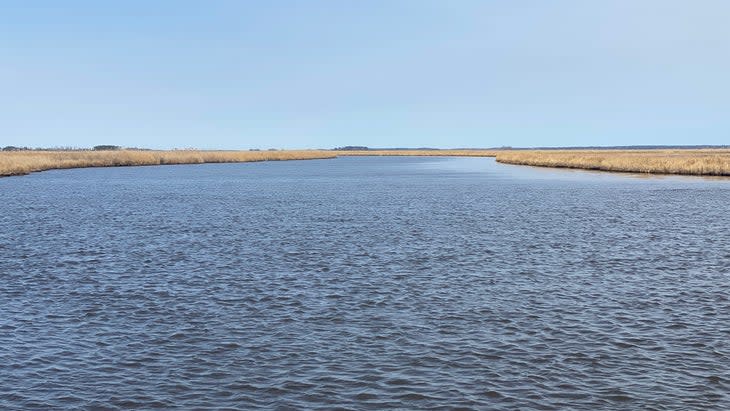
Home to one of the largest breeding populations of bald eagles on the East Coast, Blackwater National Wildlife Refuge is a 28,894-acre stretch of mixed hardwood and loblolly pine forests, tidal marsh, and freshwater wetlands. The park, which has five miles of hiking trails and 17 miles of water trails, is perfect for paddlers as well as birders observing one of the best migratory bird corridors in the U.S. Sometimes referred to as "the Everglades of the north," Blackwater sees thousands of ducks (from 20 different species), snow geese, and tundra swans during peak season, in November. Year-round residents include blue-winged teals, great blue herons, and the formerly endangered Delmarva peninsula fox squirrels.
Massachusetts
Wompatuck State Park
As state parks go, Wompatuck is on the smaller side, at a mere 3,526 acres, but it still delivers a 260-site campground, 12 miles of non-motorized roads for biking, a boat/kayak launch, and 40 miles of paths for hiking, mountain biking, and equestrian use. The trails here wind through dense stands of White Atlantic cedar and shag bark hickory to idyllic ponds and the larger Aaron River Reservoir. Go in fall for unforgettable foliage.
Michigan
Porcupine Mountains Wilderness State Park

The Upper Peninsula and the Porcupine Mountains, or Porkies, as they're affectionately called by locals, offer killer outdoor access. At 60,000 acres, this protected area is the largest state park in Michigan, and it's full of hiking, disc golf, and paddling opportunities amid old-growth hemlock and sugar-maple forests, sparkling lakes, rushing waterfalls, and hilltops overlooking the chilly blue water of Lake Superior.

Minnesota
Cascade River State Park
This wooded wonderland, 10 miles from the quaint North Shore town of Grand Marais, is home to a series of five magnificent waterfalls, as the mighty Cascade River drops a whopping 900 feet through ancient basalt lava flows in its final three miles. Avid hikers should check out the 3.5-mile Lookout Mountain Loop, with its panoramic views of Lake Superior, the largest freshwater lake in the world. In winter, a groomed cross-country ski trail provides hours of snowy fun.
Mississippi
Natchez National Historic Park
Here in the Magnolia State, a lot of press goes to promoting the 444-mile, NPS-managed Natchez Trace Parkway, but relatively little points to its eponymous national historic park, a beacon for history buffs seeking to learn about the area's rich and sometimes brutal cultural history. At Natchez, guests can tour Civil War sites highlighting the Federal occupation of the city; visit Forks of the Road, once the second-largest slave market in the Deep South; and see Melrose, a preserved antebellum-era plantation in the country.
Missouri
Rock Bridge Memorial State Park
For caving and geology nerds who reside in the Midwest, Rock Bridge Memorial State Park is a fantastic place to spend a weekend. The property centers around one of Missouri's finest examples of karst topography, with a tree-topped natural arch of limestone, a handful of sinkholes, and two large caves. Devil's Icebox, the largest of the two, is over six miles long and is currently closed to protect a cauldron of endangered gray bats. Not so into caves? Hike or bike across miles of trails that wind through the park's preserved grasslands.
Montana
Bighorn Canyon National Recreation Area

Though loads of attention is heaped onto the NPS' national parks, the agency manages hundreds of less-traveled public lands, too, Bighorn Canyon, in southern Montana, is easily one of the most scenic of our country's parks, national or otherwise. Established by an act of Congress in 1966, the park protects massive, man-made Bighorn Lake and dozens of miles of rust-orange sedimentary strata forming the surrounding ravine. Top activities here include trout fishing in the Afterbay, plus boating, hiking, and backcountry camping up tributary creeks and canyons amid shrubs and coniferous forests. A great variety of wildlife includes bighorn sheep, bears, and mule deer.
Nebraska
Platte River State Park
The Cornhusker State often gets razzed for being flat "flyover country," but Platte River offers a wealth of outdoor adventures. Canoe along the mellow Platte River Water Trail, hike the park's 6.7-mile loop trail past a burbling waterfall, challenge yourself on a series of designated mountain biking trails among the forested rolling hills and bluffs, and, when the day is done, cozy up in one of the site's vintage cabin rentals.
Nevada
Tule Springs Fossil Beds National Monument
Next time you're in Las Vegas, skip Valley of Fire for a nearby park that's far less crowded yet jam-packed with fascinating history-Tule Springs Fossil Beds. Sitting at the southern end of the Desert National Wildlife Refuge, the park has some pretty incredible scenery and opportunities for adventurous hiking and scrambling. This area was designated in 2014 to protect over 436 paleontological sites with Ice Age-era fossils of mammoths, ground sloths, camels, and the giant North American lion.
New Hampshire
Cardigan Mountain State Park
New Hampshire's rugged White Mountains have long been a favorite of outdoor fanatics, but the fee-free Cardigan Mountain State Park is often ignored in favor of bigger fare, like Franconia Notch and the Presidential Range. Crowd-averse trekkers will love the 360-degree views from Cardigan Mountain's treeless granite summit, atop which a 1924 observation tower sits. Along the park's many trails, visitors will pass through a northern hardwood forest of sugar maple, beech, and yellow birch, before ascending a rocky ridge of red spruce and cinquefoil as they near the rocky bald. The area offers hiking, snowshoeing, and nordic and backcountry skiing.
New Jersey
Wawayanda State Park

With a name taken from a Lenape phrase meaning "winding, winding water," Wawayanda State Park is a stronghold of preserved natural marvels, situated an hour's drive from the hoi polloi of Newark. Not only does its 35,161-acre breadth contain a twenty-mile stretch of the storied Appalachian Trail, but visitors can also gaze out at sweeping views from Pinwheel Vista or marvel at the awe-inspiring fall colors along the Wawayanda Lake Loop. The park offers hiking, biking, horseback riding, canoe rentals, a boat launch, and four group campsites.
New Mexico
Chaco Culture National Historic Park
With social-media darlings like the Grand Canyon clogging the airwaves, it can be easy to forget that the NPS is home to scores of other sites preserving our country's Native cultures. Chaco Culture National Historic Park offers a little bit of everything-crumbling Menefee badlands, prominent sedimentary cliffs, and a series of Chacoan "great houses." These structures, called by the NPS "the largest, most complex, and best preserved prehistoric architectural sites" in North America, showcase a regional system of Indigenous communities that flourished between the 9th and 13th centuries. Visitors can explore the great houses via ranger-led tours or self-guided hiking trails.
New York
Fillmore Glen State Park
The Finger Lakes Region of upstate New York is a leaf peeper's paradise, and its narrow gorges and waterfall-rich hiking trails draw visitors year round. Yet somehow, Fillmore Glen has remained something of a secluded oasis, just 30 minutes north of Ithaca. Here, hikers can climb past five waterfalls, crane their necks to take in views of unique shale and siltstone rock formations, and check out a replica of the log cabin that Millard Fillmore, the 13th president, was born in. Anglers can fish for trout and largemouth bass in the Owasco Lake inlet, and winter visitors will love the miles of cross-country skiing and snowmobiling on unplowed roads.
North Carolina
South Mountains State Park
Set in a branch of North Carolina's famous Blue Ridge Mountains, about an hour east of the progressive and artsy mountain town of Asheville, South Mountains State Park's 21,000 acres feature miles of connecting trails through undulating hills dotted with oak, pine, and hickory trees. Whether you're an equestrian hoping for a horse-friendly campsite, a mountain biker looking to feel the wind on your cheeks on steep, twisty terrain, or a new backpacker looking to reserve sites near reliable water, this wooded haven is a worthy alternative to the bumper-to-bumper traffic in Great Smoky Mountains.
North Dakota
Knife River Indian Villages National Historic Site
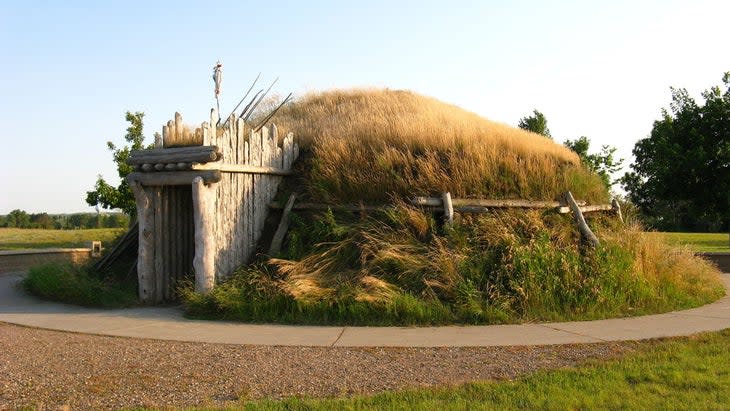
The powerful Missouri River is a hallmark waterway in North Dakota's vast landscape of sprawling grasslands, and Knife River Indian Villages offers a place in which to learn about the vibrant culture of the Northern Plains Native Americans. The park offers trails to depressions in the earth that hint at a once-thriving Hidatsa village, as well as a reconstructed round Earthlodge furnished with replica artifacts. In addition to appreciating the site's incredible Indigenous roots, anglers here can try their hands at catching northern pike, walleye, and trout along the Knife and Missouri Rivers (permit required).
Ohio
Brecksville Reservation
Cuyahoga Valley is one of the most-visited national parks in the U.S., but three miles north of its busy waterfall and trails through rock ledges sits Brecksville Reservation, a wooded park just outside urban Cleveland that locals revere for its quiet oak-hickory forests and seven gorges of eroded Berea sandstone. Spooky Deer Lick Cave and a new hiking loop around the massive boulders and tranquil waterfall of Chippewa Creek Gorge are the area's must-sees, that is, if you're not practicing your putt at the Seneca Golf Course.
Oklahoma
Salt Plains National Wildlife Refuge
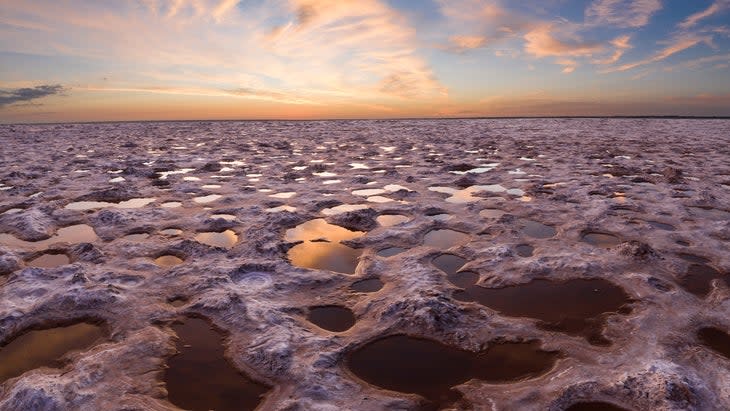
Home to thousands of migrating sandhill cranes, shorebirds, ducks, and even the occasional endangered whooping crane, the Salt Plains National Wildlife Refuge has been designated as a Globally Important Bird Area by the American Bird Conservancy. This 32,197-acre land mass contains a multitude of north-central Oklahoma's ecosystems, from mixed-grass prairie to forested riparian zones and historically-significant salt flats (the Cherokee Nation used salt from the region in the preservation of meats). Birding and hiking are the major draws here, though many also fish and dig for crystals.

Oregon
Owyhee River Wilderness
Eastern Oregon's Owyhee River Wilderness, or, more specifically, the winding road through Leslie Gulch, will have road trippers feeling like they're delivering a ring to Mordor. Towering spires of umber-tinted rhyolite tuff sprout out of the earth like giant fingers, and you will find peaceful solitude in rafting the Owyhee Wild and Scenic River. Camp down a dusty dirt road at Slocum Creek for spectacular sunrise vistas before venturing out on a hike through the bitterroot blooms and honeycombed rocks of Leslie Gulch or Painted Canyon.
Pennsylvania
Caledonia State Park
Caledonia State Park may be only 70 miles from busy Baltimore, yet it is a gateway to 84,000 acres of protected state forests and miles of day-use and overnight hiking trails-including a tiny piece of the Appalachian Trail. Named after an iron furnace owned by Thaddeus Stevens in the mid-1800s, the park hosts two developed campgrounds, surrounded by hemlock and white pine, with RV hookups and hot showers, picnic tables along shaded Conococheague Creek, and opportunities to fish for trout (brown, brook, and rainbow).
Rhode Island
Lincoln Woods State Park

Rhode Island may be the smallest state in the union, but it is home to excellent outdoor recreation, and Lincoln Woods State Park, in Blackstone Valley, has a host of activities for even the pickiest nature lover. Sunbathe on the freshwater beach at Olney Pond, ride along equestrian-only trails, cycle around miles of steep, shaded singletrack, or simply kick back with a beer and a good book in one of the shaded picnic shelters.

South Carolina
Ernest F. Hollings ACE Basin National Wildlife Refuge
Situated inside the immense 350,000-acre Ashepoo-Combahee-Edisto (ACE) Basin System (one of the largest undeveloped wetlands out east), the Ernest F. Hollings National Wildlife Refuge is a center for amphibians, fish, and huge numbers of migratory and resident birds. The preserve, which is only 20 miles southwest of Charleston, offers trails with photo blinds for covert wildlife viewing, plus 25 miles of unpaved service roads for year-round hiking, biking, and birding (be on the lookout for colorful painted buntings and threatened wood storks) among the forests, estuaries and fresh and salt-water marshes.
South Dakota
Jewel Cave National Monument
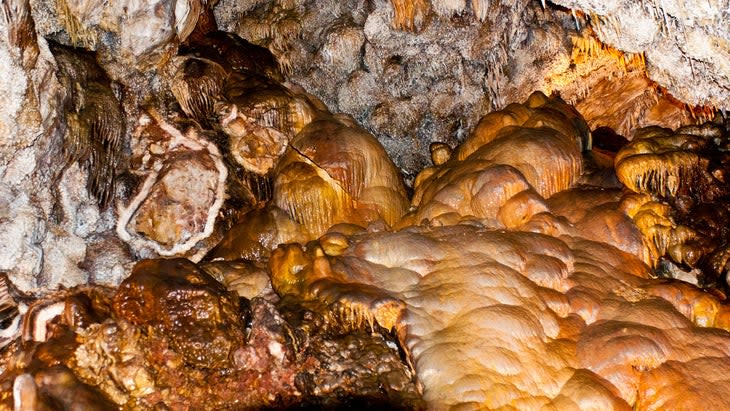
Often overlooked in favor of its same-state national park brethren, Badlands and Wind Cave, Jewel Cave is a destination in its own right, especially for avid hikers and cavern enthusiasts. With more than 215 surveyed and mapped passages, many of which are open to the public via ranger-led tours, it's the third-longest cave on the planet. An abundance of calcite crystals and gypsum spiders decorate its walls, sparkling like diamonds when a headlamp hits just right. While most visitors focus on the cave and its miles of passages, you can also hike and bike among the wildflowers and pine forests on a variety of surface trails in the area.

Tennessee
Hiwassee/Ocoee Scenic River State Park
If you're into river rafting, big vistas of lush hills, and crowd-free trails, Hiwassee/Ocoee River State Park has got you covered. Not only does the park boast 23 miles of river, rated from class I to class V (yes, professionals are available to take you out for the day), it's also surrounded by the 655,598-acre Cherokee National Forest and home to a 47-site campground at Gee Creek, which offers primitive sites with picnic tables, fire rings, and grills.
Texas
Big Bend Ranch State Park
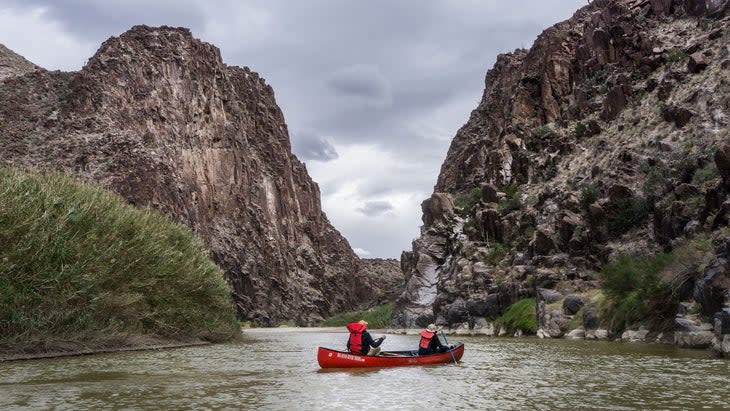
In West Texas' arid landscape of ocotillo and prickly pear, most road trippers head straight for Big Bend National Park, but they're missing out on some pretty incredible water access, backcountry camping, and Chihuahuan Desert trails just a few miles north. Though less developed than its NPS cousin, Big Bend Ranch State Park stretches along the Rio Grande for 311,000 acres, containing 238 miles of multi-use paths for biking, hiking (Closed Canyon is a classic slot hike), and horseback riding, paddling access to immense river canyons, 70 miles of 4×4 roads, and some of the darkest night skies on earth.
Utah
Kodachrome Basin State Park
A joke on the internet says the entire state of Utah should be declared one giant national park, and honestly, I'm here for that. Kodachrome Basin, in south-central Utah, sits just off one of the prettiest stretches of road in the country, Scenic Byway 12, and is home to towering chimneys of crimson sandstone, striated mesas of crumbling sedimentary rock, and, when spring hits, some incredibly hearty wildflowers. Reserve a site at one of the park's three campgrounds, hit the 1.5-mile Angels Palace Trail, and stay up late for mind-boggling Milky Way views.
Vermont
Smugglers' Notch State Park
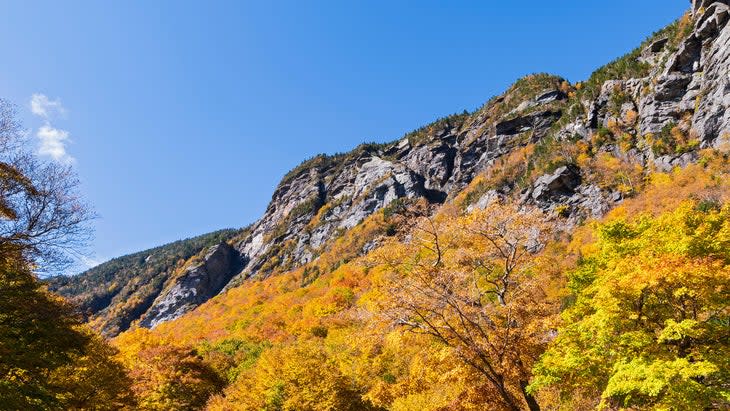
OK, so Smugglers' Notch isn't exactly a secret, but most visitors to Vermont's bucolic Mount Mansfield area head straight for Stowe Mountain Resort, neglecting one of the state's premier natural preserves, a stone's throw away. Named after a narrow pass in the Green Mountains, Smugglers' Notch provides a gorgeous corridor to waterfall-fed swimming holes; 50+ miles of cycling-ready singletrack; numerous boulder problems (short routes done ropeless), and, in winter, ice climbs; and leg-busting hiking trails (including a steep, 4-mile trek to the summit of Vermont's highest peak).
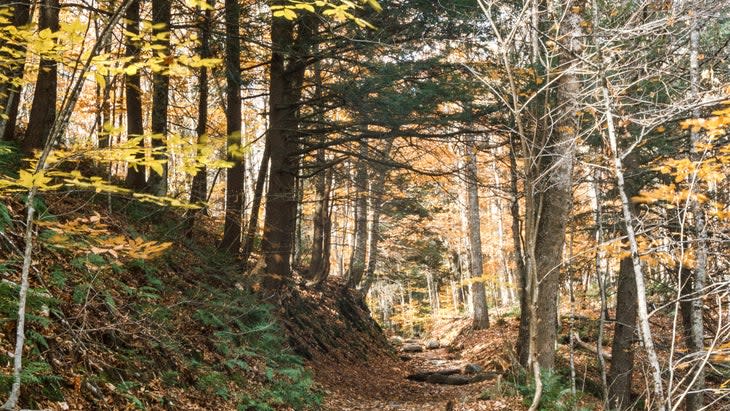
Virginia
Grayson Highlands State Park
You don't have to go all the way to Iceland to swoon over wild ponies; Virginia's Grayson Highlands is populated by more than 100 of them. Set near the state's southern border with North Carolina, the park is considered an "alpine Eden," with streams full of trout, miles of grassy balds, broad meadows teaming with flowers, and (relatively) pain-free trail access to Mount Rogers, the tallest peak in Old Dominion.
Washington
North Cascades National Park
Even though a highway runs right through North Cascades, this gem consistently ends up among the five least visited national parks. That's because the 505,000-acre park is subdivided by Ross Lake National Recreation Area and abutted by Lake Chelan to the south (bring your stand-up paddleboards), meaning that all you adventurous souls will have to hike for it. Thankfully, the park is home to over 400 miles of trails, past cyan-blue glaciers and remote alpine peaks, including an 18-mile dog-friendly stretch of the Pacific Crest Trail. Backpackers rejoice-there's enough scenery here to last a lifetime.

West Virginia
Babcock State Park
The outdoor mecca of West Virginia is one of the country's best-kept secrets, and Babcock State Park, located 20 miles north of the iconic New River Gorge Bridge (you know, the 3,000-foot steel arch in every Instagram photo), shows it off to full effect. Not only is the park free to visit (as are all of WV's state parks), it's a forested utopia for anglers, waterfall lovers, cyclists, and hikers of all ages. In addition to a 52-site campground, Babcock rents out adorable 1930s-era log cabins, originally built by the Civilian Conservation Corps. Photographers-don't miss the Glade Creek Grist Mill, where you can learn about the process of grinding cornmeal and take calendar-worthy fall-foliage photos.
Wisconsin
Big Bay State Park
You'll need to hop on a 20-minute ferry ride to this island-centric park surrounded by Lake Superior's midnight blue waves, but once you arrive, you'll be greeted by lush boreal forests, stunning lakeside cliffs, and hiking paths that hug the water's edge. Pitch a tent at one of the area's 21 campsites (there are hot showers), then take a dip in the park's eponymous big bay.
Wyoming
Curt Gowdy State Park
As home to Yellowstone and Grand Teton, Wyoming has stiff competition right at home in outdoor recreation on public lands, but Curt Gowdy State Park, between Cheyenne and Laramie, gives larger parks a run for their money. The 3,395-acre park, which is a surprisingly short two-hour drive from Denver, has been hailed for possessing an "Epic" trail system by the International Mountain Biking Association, plus twelve (that's not a typo) campgrounds, a free-to-the-public horse corral, and three reservoirs where visitors can boat and fish for rainbow trout and kokanee salmon. Coniferous forests, sharp granite escarpments, and an abundance of birdwatching as well.
Gaia and Trailforks can be used to download info on many of the campgrounds and hiking and biking trails noted above. (Gaia is owned by Outside Inc., the company that owns Outside.)
Emily Pennington is a freelance adventure journalist based in Los Angeles. She has visited all 63 U.S. national parks (62 of them in a year) and many more without the magic “national park” appellation. Her book, Feral: Losing Myself and Finding My Way in America's National Parks, about the parks journey, came out in February (Little A/Amazon Publishing). As of press time, she was in the Galapagos.

For exclusive access to all of our fitness, gear, adventure, and travel stories, plus discounts on trips, events, and gear, sign up for Outside+ today.

